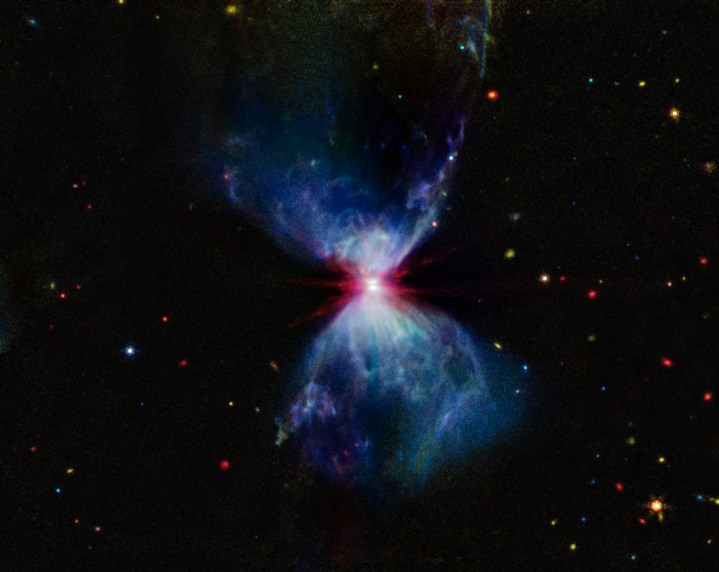L1527 , shown in this image from NASA ’s James Webb Space Telescope ’s MIRI ( Mid - Infrared Instrument ) , is a molecular swarm that harbors a protostar . It resides about 460 scant - years from Earth in the constellation Taurus . NASA , ESA , CSA , STScI
A stunning new image from the James Webb Space Telescope show a new star called a protostar and the huge outflows of dust and gas that are give out as it consumes textile from its surrounding swarm . This object has now been observed using two of Webb ’s instruments : a previous version that wastaken in the about - infrared with Webb ’s NIRCam camera , and new data in the mid - infrared taken with Webb ’s MIRI instrument .
Looking in the infrared share of the electromagnetic spectrum allows investigator to see through clouds of rubble that would be opaque in the seeable light chain , prove the interior structures of cloud like this one — named L1527 . This image shows internal structures called filaments that are formed of chemical compound called polycyclic redolent hydrocarbons ( PAHs ) and which are used to track star formation . In the shine scarlet center of attention of the image is the hot gas and debris around the protostar , from which it is feed to grow larger .

L1527, shown in this image from NASA’s James Webb Space Telescope’s MIRI (Mid-Infrared Instrument), is a molecular cloud that harbors a protostar. It resides about 460 light-years from Earth in the constellation Taurus.NASA, ESA, CSA, STScI
The NIRCam prototype looks very different because this wavelength evince mostly light that is shine off the dust , while this new MIRI image shows the thick pockets of rubble . The MIRI image prove an expanse in white that is hard to see in the NIRCam image , which is a potpourri of PAHs , ionized gas , and other material .
“ The combination of analyses from both the near - infrared and mid - infrared scene reveal the overall doings of this system , include how the central protostar is affecting the surrounding region , ” Webb scientistsexplain . “ Other stars in Taurus , the star - forming region where L1527 resides , are forming just like this , which could lead to other molecular cloud being disrupted and either preventing Modern stars from forming or catalyze their development . ”
This beautiful sight wo n’t be around forever and a day , though . Over time the protostar will go along to waste more fabric and push away the leftover of the molecular cloud it repose in . Then it will become a on-key star and will become visible in the visible luminosity wavelength as well .